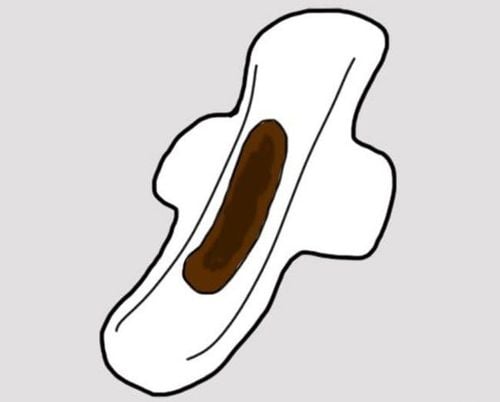This is an automatically translated article.
The article was professionally consulted by Specialist Doctor Obstetrician and Gynecologist - Department of Obstetrics and Gynecology - Vinmec Hai Phong International General Hospital. The doctor has many years of experience in the field of obstetrics and gynecology.
Labor is a milestone marking the end of the "heavy carrying" months to prepare for the "painful delivery". This will be a time containing a lot of anxiety and worry, especially for the first mother and child. This article will provide some information to help mothers be more confident on the upcoming journey of "birth".
1. How long does labor take to give birth?
Labor is a purely physiological process that causes the fetus and its appendages (placenta, amniotic membrane and umbilical cord) to be removed from the mother's genital tract. This is a combination of cycles of uterine contractions and cervical dilation, resulting in the delivery of the fetus and placenta.
The time of labor varies from person to person and depends on many factors, such as the force of contractions, the genital tract, the mother's pelvis or the whole fetus, and the size of the baby's head. In particular, in women who have given birth to a premature baby, because the cervix is slow to open and the perineum is still firm, the labor time is usually longer than that of women who have given birth with an average of 16 to 24 hours (while the vaginal discharge is not normal). only 8 to 16 hours).

In addition, the long time is also because a part of these pregnant women give birth to their first child, when detecting signs of about to give birth, mothers easily fall into a state of surprise and confusion, completely not knowing what to do. as well as not knowing how to breathe and push to help contractions become more effective, so it requires more time and more effort. At that time, a labor that lasts too long will more or less adversely affect the health of both mother and baby. Therefore, it is extremely necessary to equip yourself with the necessary knowledge to actively "respond" when signs of labor occur.
Trắc nghiệm: Dấu hiệu cảnh báo chuyển dạ thực sự
Chuyển dạ là quá trình thai phụ bước vào giai đoạn “đẻ đau” để kết thúc thời gian “mang nặng”. Thời gian và dấu hiệu chuyển dạ sẽ khác nhau tùy vào vào từng người và nhiều yếu tố. Theo dõi bài trắc nghiệm dưới đây sẽ giúp bạn hiểu rõ hơn các dấu hiệu chuyển dạ một cách chính xác và an toàn.2. How do the signs of labor and delivery compare?
2.1. Pink slime
During pregnancy, there is always a solid mucus plug at the junction of the cervix and vagina. Besides the muscular wall of the uterus, the amniotic membrane, this mucus plug is also a protective barrier for the fetus, against the invasion of bacteria or external mechanical forces into the amniotic chamber.
Therefore, when the cervix begins to open, the mucus plug will be released and exit the vaginal opening as a little viscous, pinkish mucus. This is a warning sign that labor is officially about to begin.
2.2. Uterine contractions appear
In the last month of pregnancy, women sometimes feel cramps throughout the abdomen when moving or moving. This feeling is quite vague, most of the time it is short, sparse in frequency, does not cause any obvious pain and does not mean to change the cervix or the position of the fetus.
Only when the pregnancy enters between 38 and 40 weeks, the contractions will start more clearly with a cycle of increasing in intensity and frequency. During the attack, the mother will feel a lot of pain and the whole abdomen is tight. Combined with the effective breathing and pushing of the mother, this is the driving force for the labor process to expel the fetus.
Compared to giving birth in the future, when giving birth to a second baby, women often suffer more pain due to uterine contractions. Because the perineum and cervix are usually very firm when they have never given birth; Therefore, contractions need to be effective in terms of intensity, duration and frequency of contractions to ensure cervical dilation and expulsion of pregnancy.
2.3. Amniotic fluid flow

Under the action of uterine contractions, the pressure in the uterine cavity increases to a peak, the fetal head moves down, forming the amniotic sac. The amniotic sac is distended and at the point where it meets the cervix, this is where the amniotic membrane is thinnest and very fragile. When the membranes rupture, some of the amniotic fluid in the uterus leaks out. If the amniotic membrane slips over the placenta or the baby's head drops in, the amniotic fluid flow will either be completely blocked or only leak.
At this time, the rupture of membranes is also the cause that causes uterine contractions to appear more and become more rapid.
2.4. Vaginal examination changes
These are realistic signs of labor objectively through the examination of the inside of the vagina by the obstetrician or midwife. Features to be noted are changes in the cervix, specifically, the cervix is erased and gradually opened under the action of contractions, the fetal amniotic sac is established (only when the amniotic membrane is intact) and there is a evolution of the fetal position after each uterine contraction. When all of the above signs are present, the doctor will tell you the right time to push for labor according to the contraction cycle, in order to increase the efficiency of expelling the fetus.
In short, if you have one of the signs that you are about to give birth above, you need to go to the hospital immediately to monitor the progress of labor as well as get the help of a doctor. Wishing all mothers round and square children!

Please dial HOTLINE for more information or register for an appointment HERE. Download MyVinmec app to make appointments faster and to manage your bookings easily.













